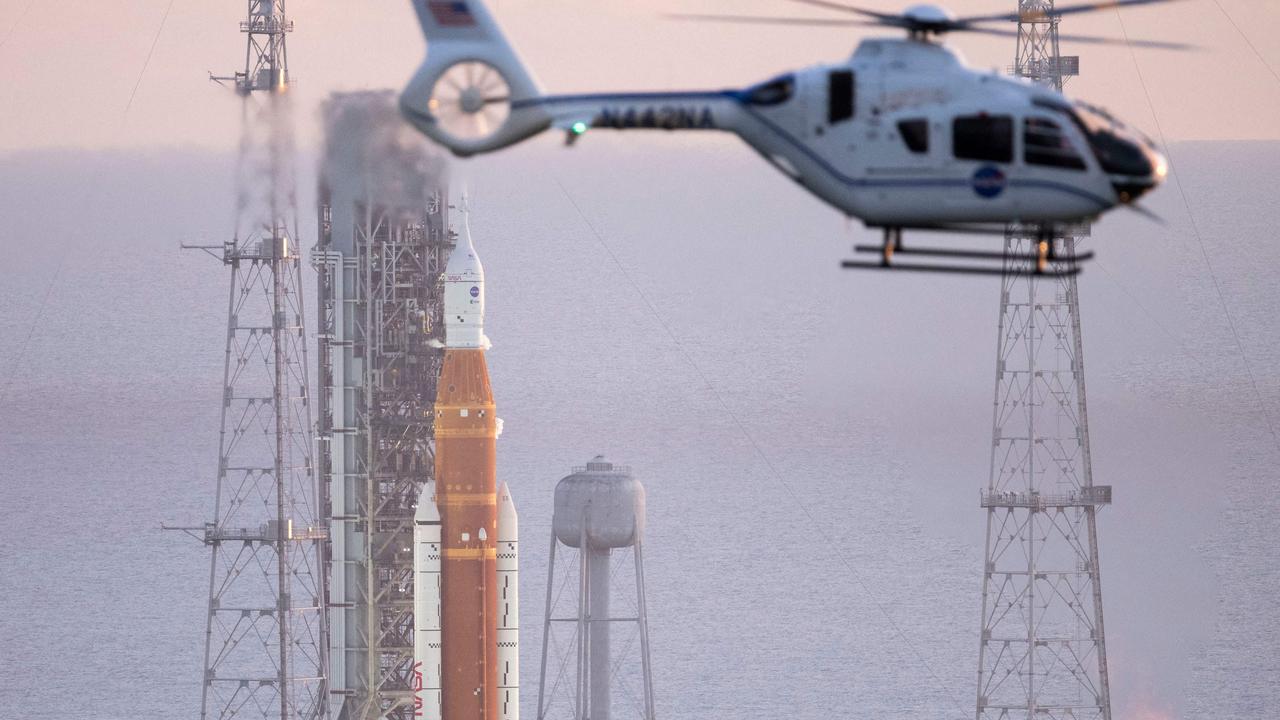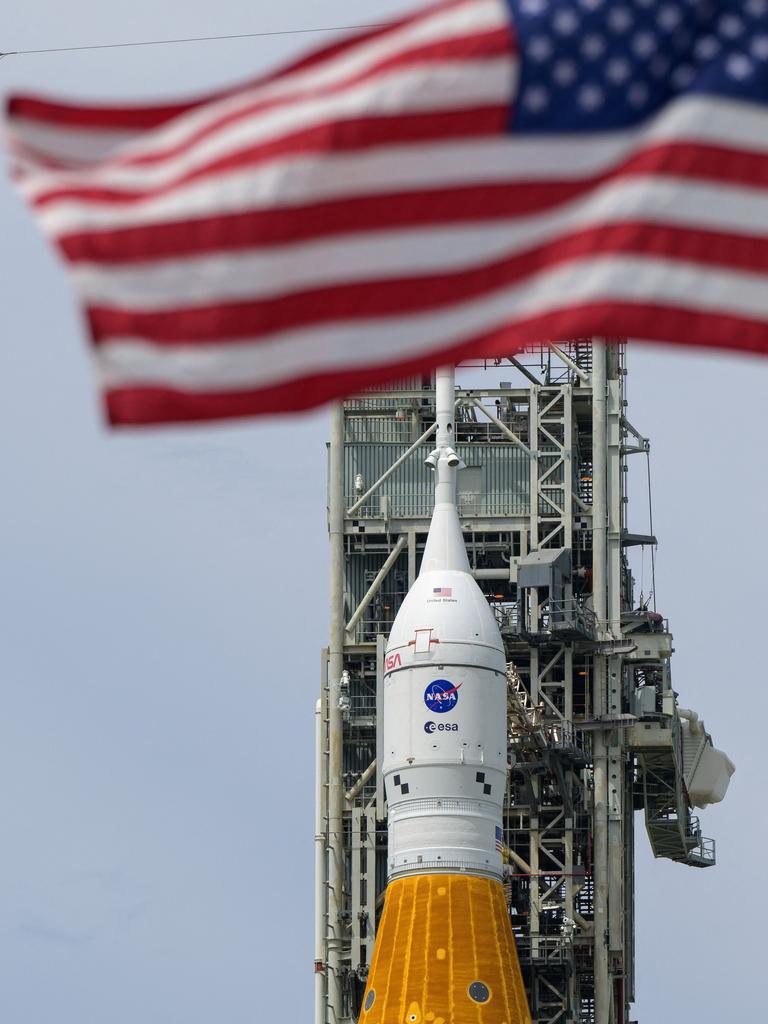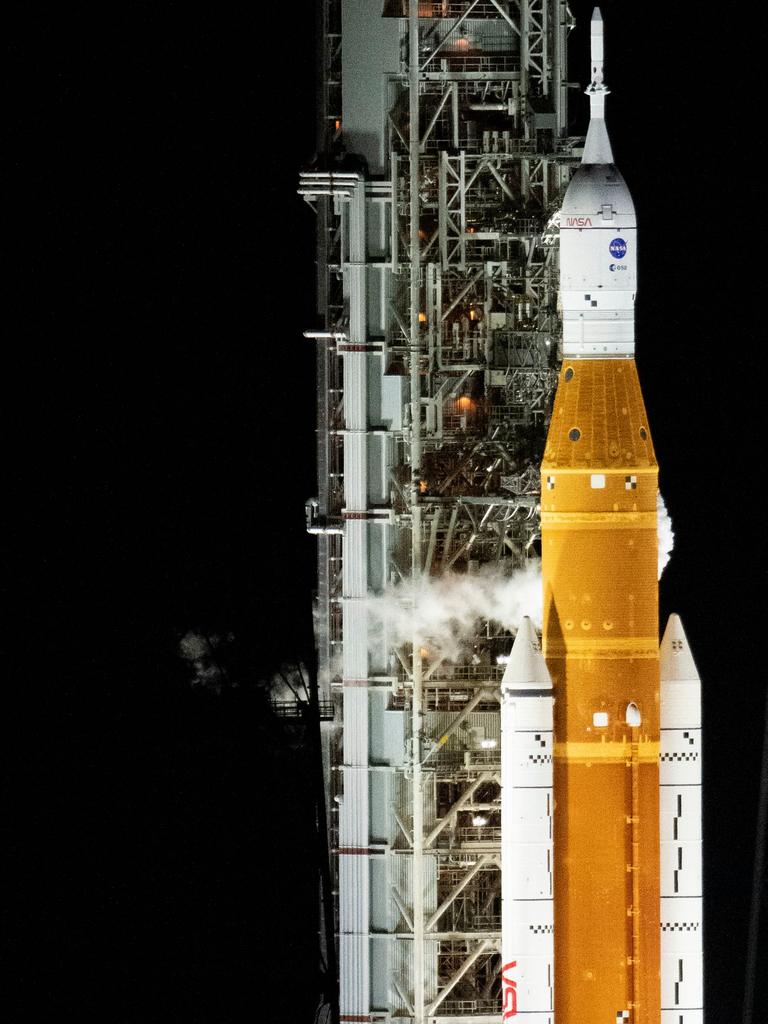Artemis 1 launch: Mission to the Moon stopped at last moment due to engine problems
NASA’s biggest ever rocket was all set to blast off – but a last-minute problem derailed it at the eleventh hour.
The biggest rocket NASA has ever built was expected to blast off on Monday to send its next-generation Orion deep space exploration vehicle on an unmanned mission to the Moon and back - but engine problems delayed the flight at the eleventh hour.
The 32-story, 2.6 million-kg Space Launch System (SLS), was scheduled to lift-off as part of an ambitious program to eventually go to Mars, from the Kennedy Space Center in Florida at 8.33am ET (10.33pm AET) on Monday.
Want to stream your news? Flash lets you stream 25+ news channels in 1 place. New to Flash? Try 1 month free. Offer ends 31 October, 2022 >

But the launch was placed on an “unscheduled hold” and then officially scrubbed just minutes after it was originally supposed to have launched because of a temperature issue with one of the four engines which failed a “bleed test”, the US space agency said.
The Space Launch System rocket and Orion spacecraft “remain in a safe and stable configuration”, it added.
The launch of #Artemis I is no longer happening today as teams work through an issue with an engine bleed. Teams will continue to gather data, and we will keep you posted on the timing of the next launch attempt. https://t.co/tQ0lp6Ruhvpic.twitter.com/u6Uiim2mom
— NASA (@NASA) August 29, 2022
NASA had a two-hour window in which to carry out the launch on Monday.
Alternative dates for launch of the Artemis 1 mission are September 2 and September 5.
The 42-day trip is expected to end with Orion returning to Earth and splashing down in the Pacific Ocean.
The mission, dubbed Artemis 1, is designed to test the SLS and the Orion crew capsule that sits atop the rocket, setting the stage for an eventual return of NASA astronauts to the surface of the Moon.
Tens of thousands of people – including US Vice President Kamala Harris – have gathered along the beach to watch the launch, which has been decades in the making.
Overnight operations to fill the rocket with more than three million litres of ultra-cold liquid hydrogen and oxygen were briefly delayed by a high risk of lightning, though it was a “go” after an hour.
Around 3am local time, another hiccup emerged: a potential leak was detected during the filling of the main stage with hydrogen, causing a pause.
After tests, the flow resumed.
“The leak is at an acceptable level and we have returned to fast fill operations,” NASA tweeted.
But NASA engineers later detected a problem with the temperature in one of the four engines and put an “unplanned hold” on the countdown before announcing it would not go ahead on Monday.
#Artemis I update: Launch is currently in an unplanned hold as the team works on an issue with engine number 3 on the @NASA_SLS core stage. Operations commentary continues at https://t.co/z1RgZwQkWShttps://t.co/mFyoeRMC6q
— NASA (@NASA) August 29, 2022
The massive orange-and-white rocket, which has been sitting on the space center’s Launch Complex 39B for more than a week, is not able to take off in case of rains and storms.
I
The rocket’s Orion capsule is set to orbit the Moon to see if the vessel is safe for people in the near future. At some point, Artemis aims to put a woman and a person of colour on the Moon for the first time.
“This mission goes with a lot of hopes and dreams of a lot of people. And we now are the Artemis generation,” NASA Administrator Bill Nelson said on Saturday.


In another first, a woman – Charlie Blackwell-Thompson – will give the final green light for lift-off.
Women now account for 30 per cent of the control room staff, compared to one for the Apollo 11 mission – the first time astronauts landed on the Moon in 1969.
During the trip, the Orion capsule will orbit the Moon, coming within 100kms at its closest approach, and then fire its engines to shoot out 64,000kms – a record for a spacecraft rated to carry humans.
One of the primary objectives of the mission is to test the capsule’s heat shield, which at 16 feet in diameter is the largest ever built.
On its return to the Earth’s atmosphere, the heat shield will have to withstand a speed of 40,000kph and a temperature of 2,760C – or half as hot as the Sun.
Dummies fitted with sensors will take the place of real crew members, recording acceleration, vibration and radiation levels.
The craft will deploy small satellites to study the lunar surface. A complete failure would be devastating for a program costing $4.1 billion per launch and that is already years behind schedule.
Life on the Moon
Monday’s launch is “not a near-term sprint, but a long-term marathon to bring the solar system and beyond into our sphere,” said Bhavya Lal, NASA associate administrator for technology, policy and strategy.
The next mission, Artemis 2, will take astronauts into orbit around the Moon without landing on its surface. The crew of Artemis 3 is to land on the Moon in 2025 at the earliest.
And since humans have already visited the Moon, Artemis has its sights set on another lofty goal: a crewed mission to Mars.
The Artemis program is to establish a lasting human presence on the Moon with an orbiting space station known as Gateway and a base on the surface.
Gateway would serve as a staging and refuelling station for a voyage to Mars that would take a minimum of several months
– With AFP




